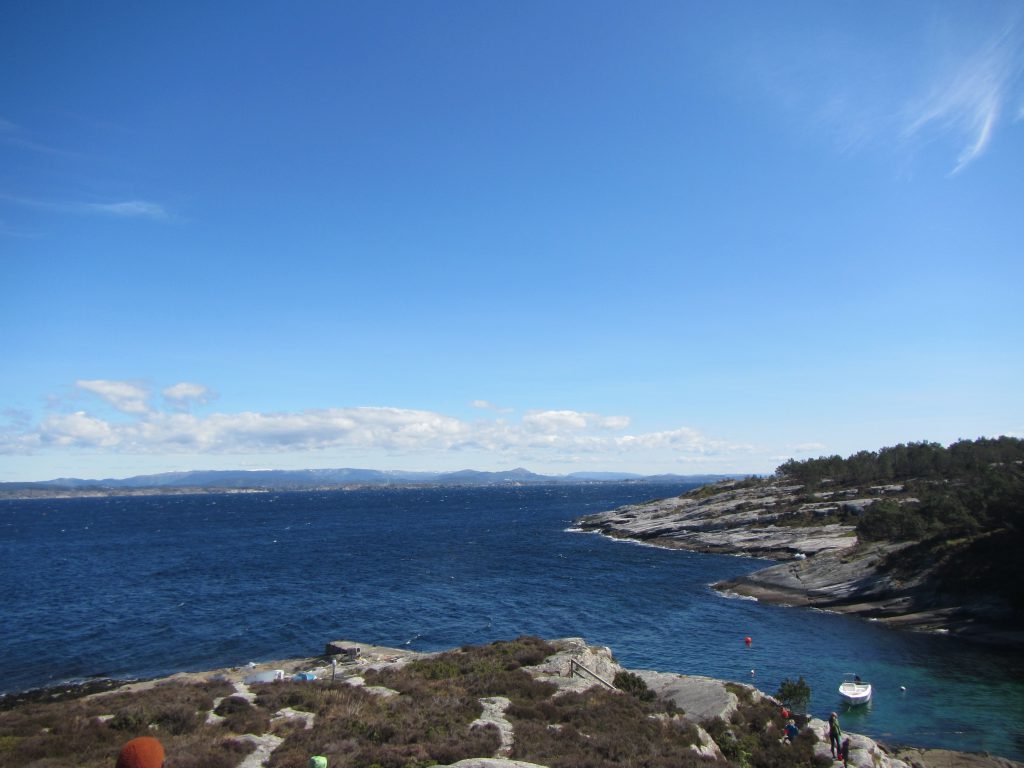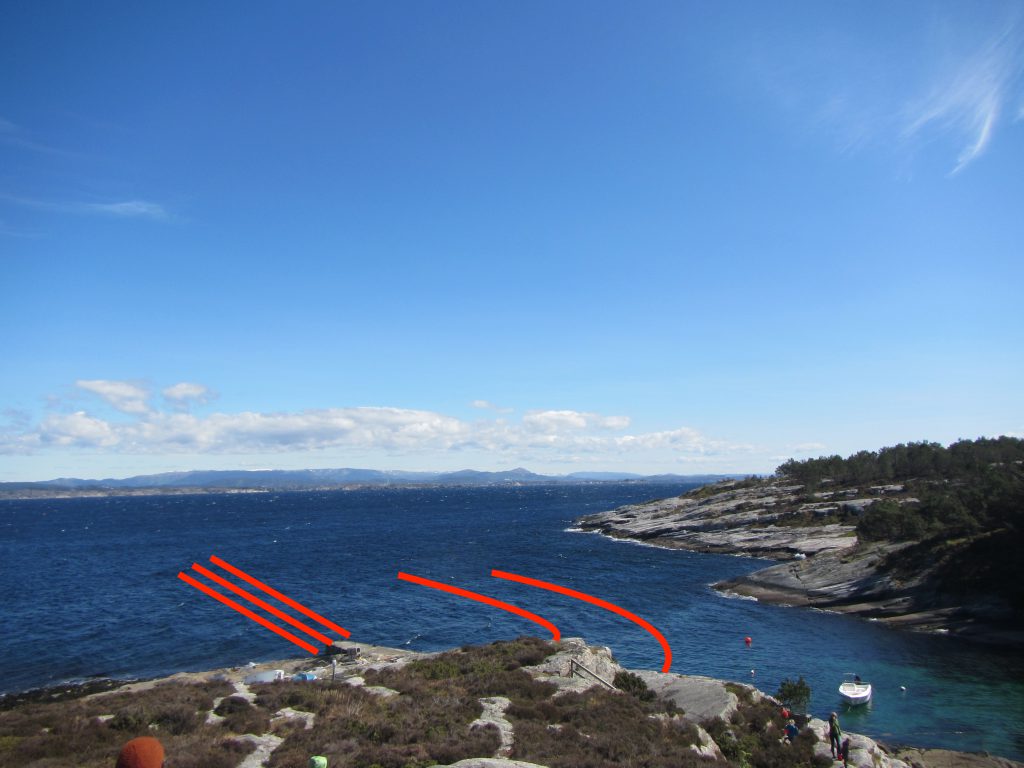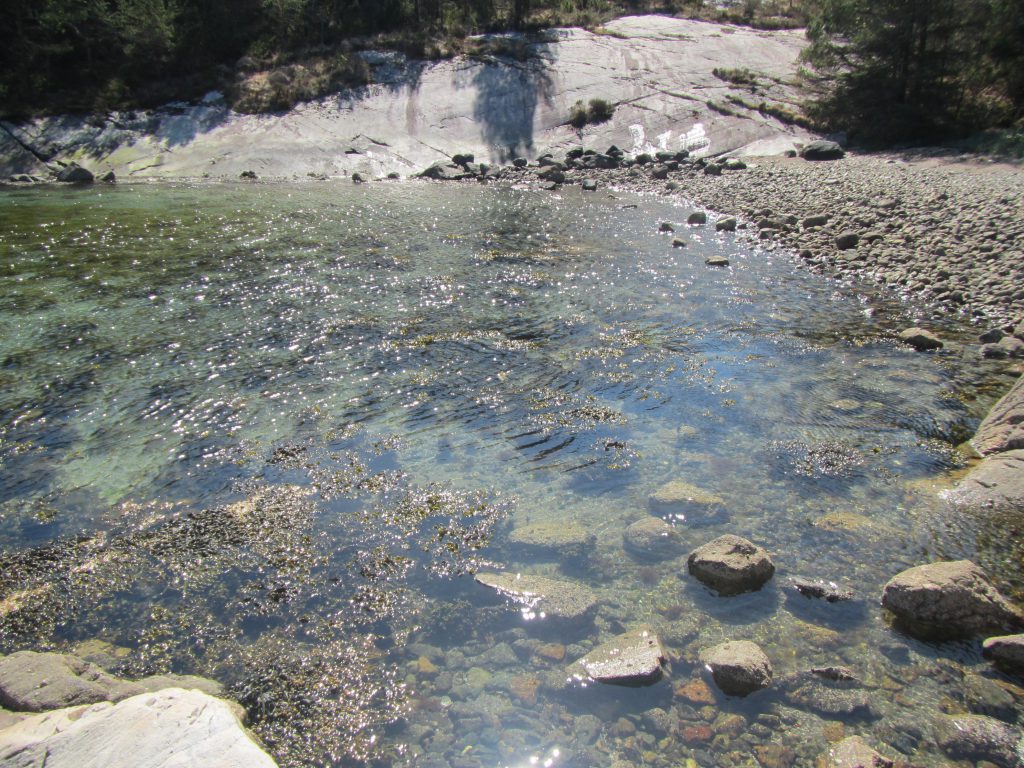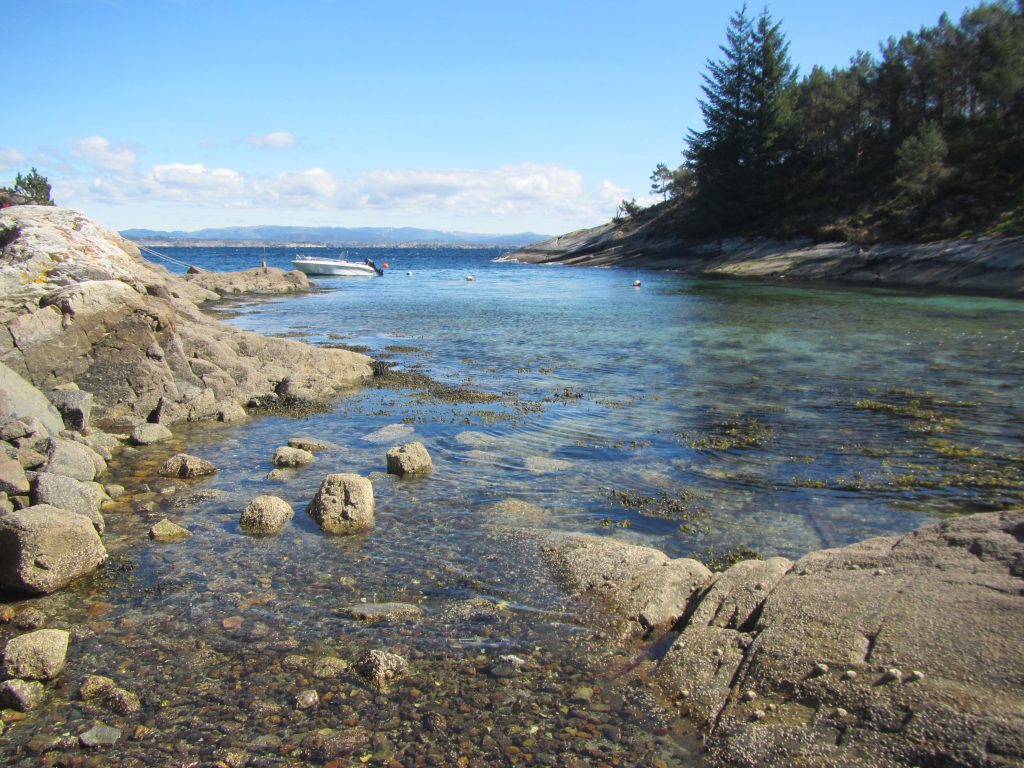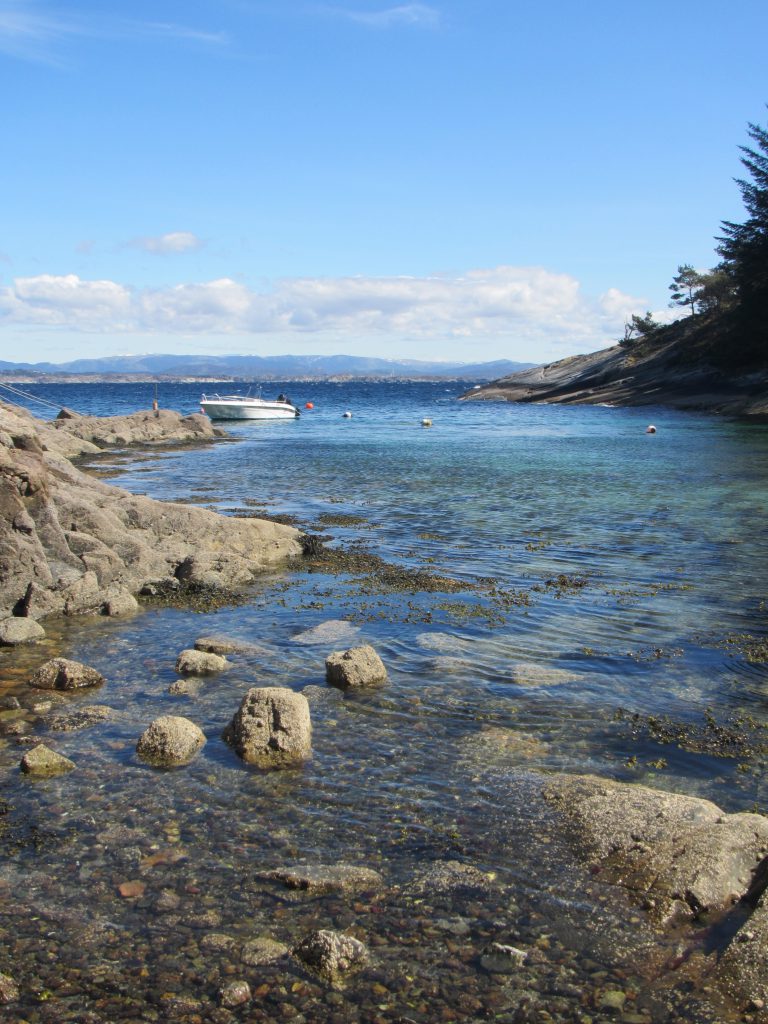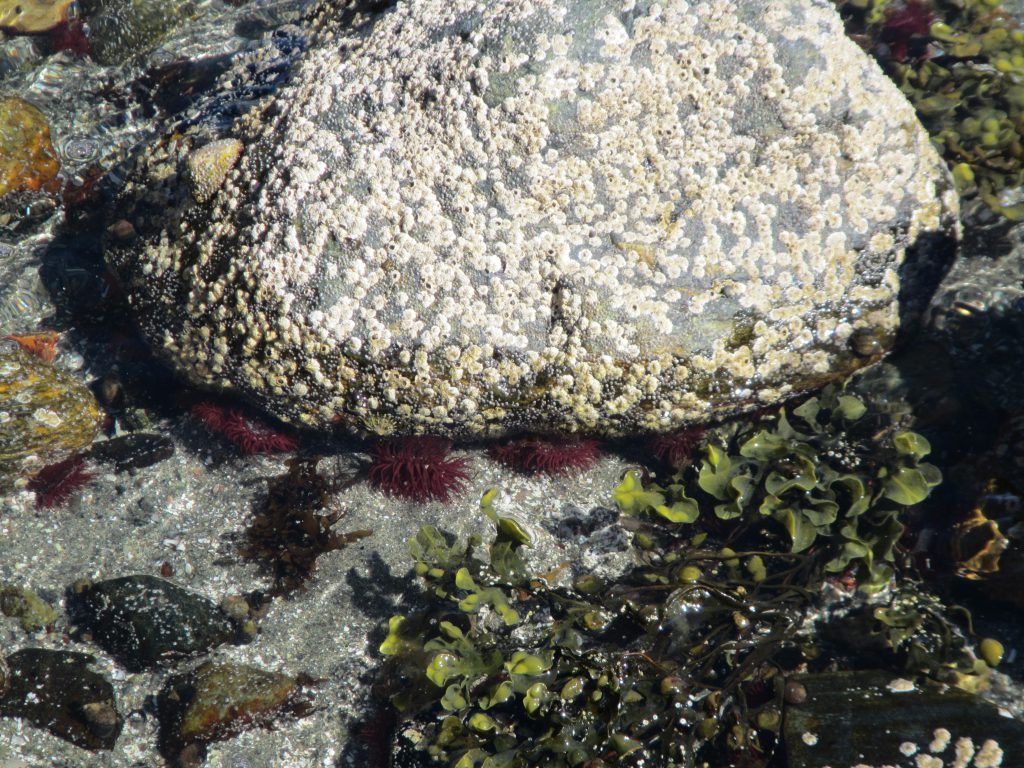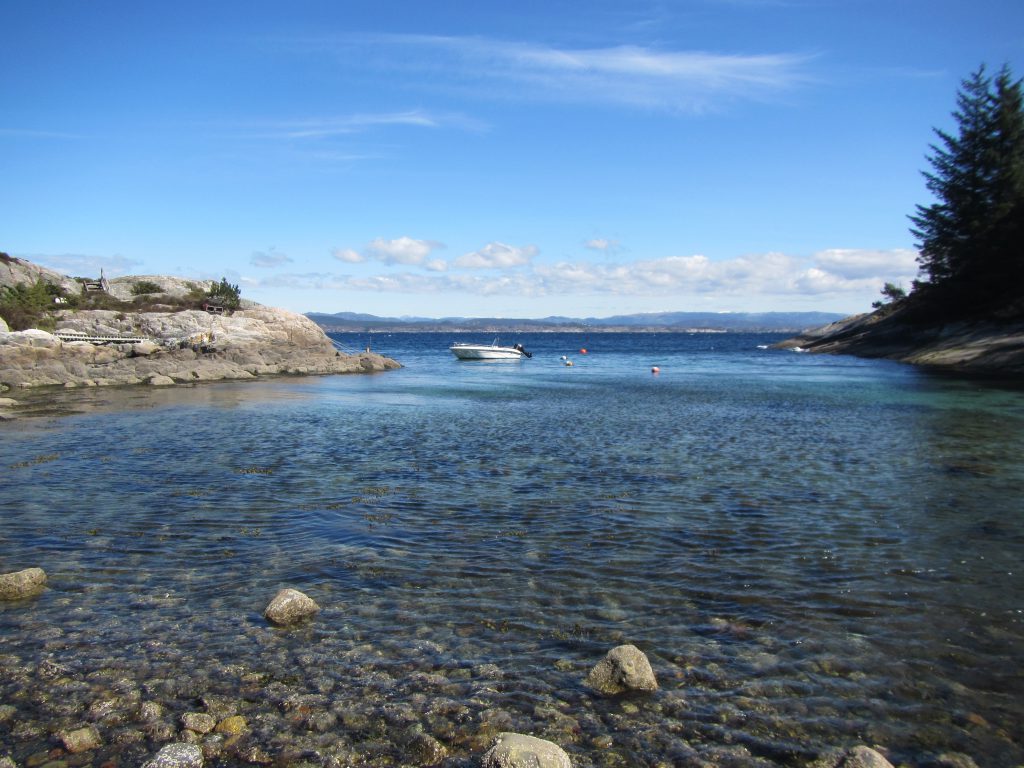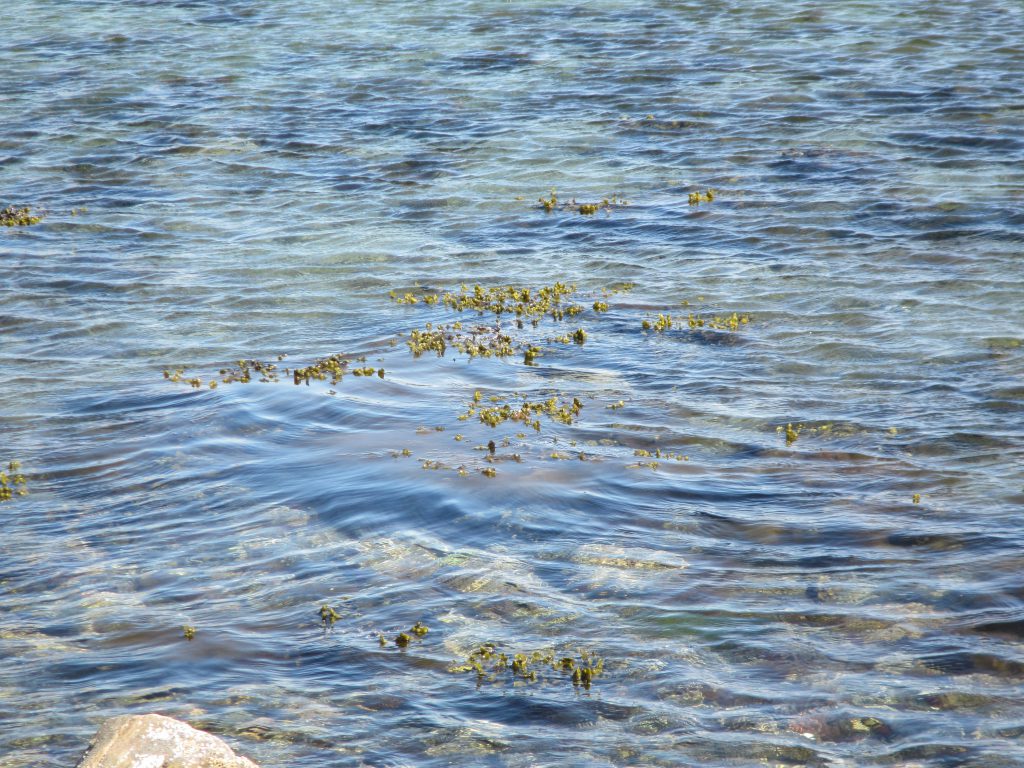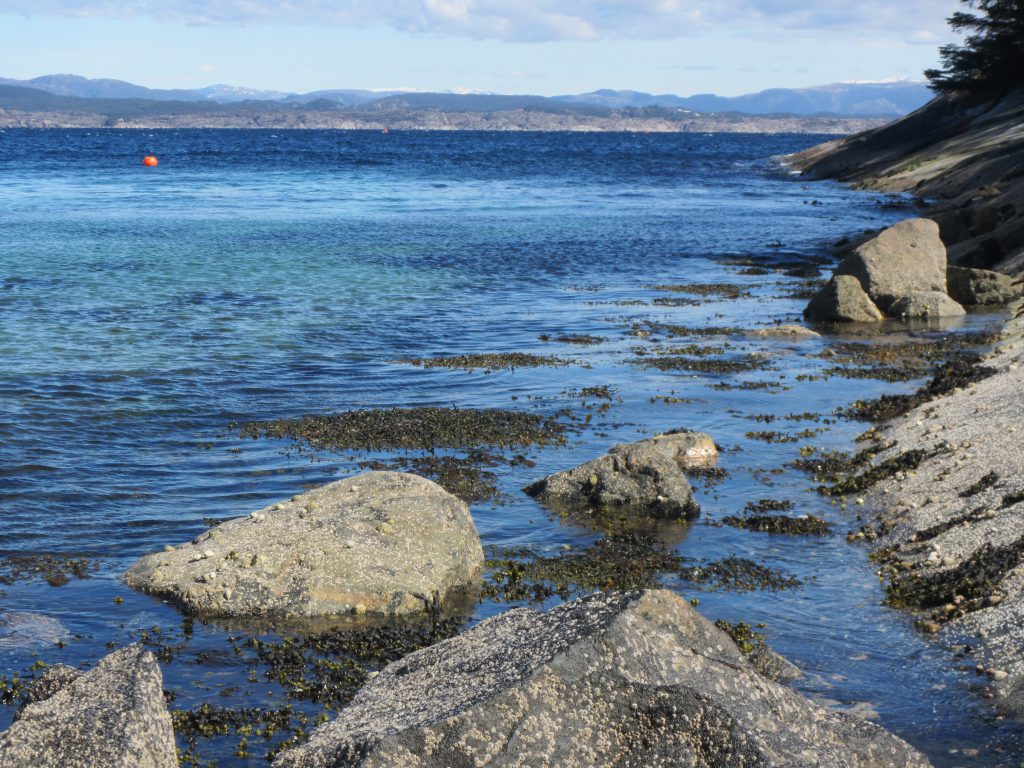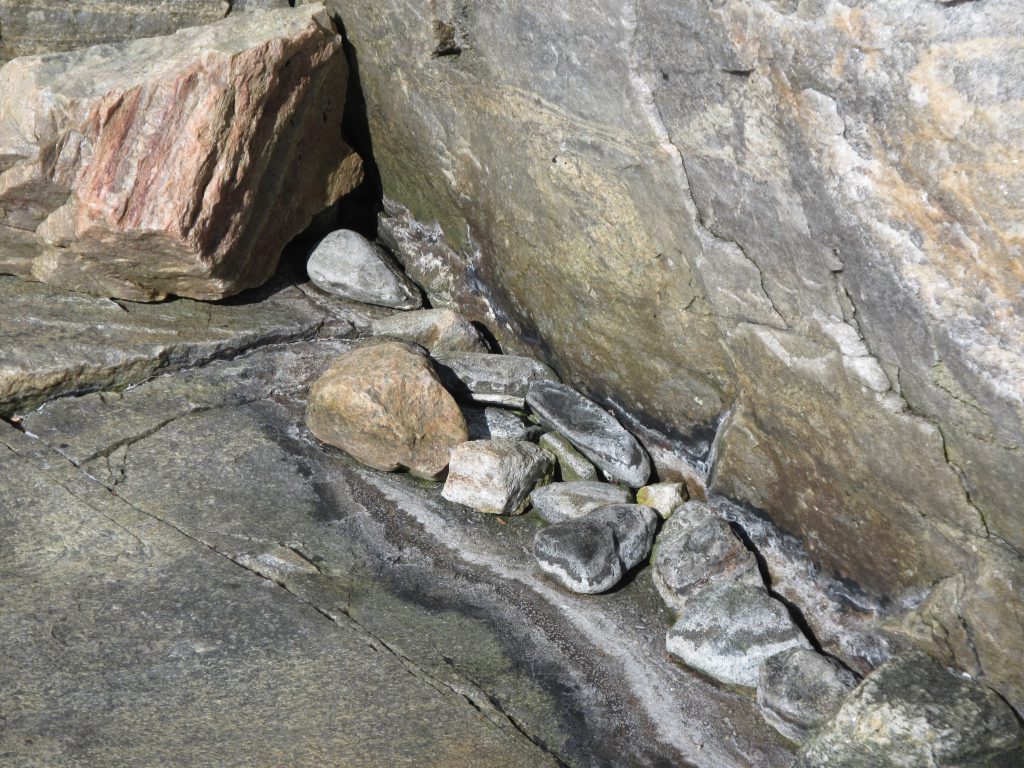
Looking at how waves are bent
As soon as waves run into water that becomes shallow enough for the wave to “feel” it, the waves start changing how fast they propagate. And depending on the shape of the topography, this often means that the waves change direction. This is called refraction and we can see it on many many different scales.
On a large scale, we see the wind waves coming down a fjord with long, straight crests, therefore not influenced by the sea floor yet . But when those waves come close to the shore, they start feeling the sea floor and react to that by being bent towards the shallower depth:
Below, I have drawn the wave crests I want you to focus on:
Straight crests coming in from the left, and then bent crests running into the mouth of the little bay to the right. Seeing it put like this, this might actually also be diffraction if we think of the mouth of the bay as of the widening behind a slit that the waves came through. Oh well.
But the same thing can also be seen on smaller scale, for example in the bay shown in the picture below. You can see some of the topography through the water, and you can infer some more: Wherever sea weed breaks the surface, water around it is probably shallower than water a little further away. And when you look closely, you can again see the waves reacting to the topography.
Similar thing again below:
Btw, this little bay is the one you see on the right of the picture on top of this blog post!
And it is not only physics of water that make this place super interesting: repeat after me, Ib: Anemones! :-)
Although it is pretty cool to spot more wave processes, like for example the wind shade — no waves phenomenon.
Again on large and small scales:
And you see the interference of waves coming round either side of those tiny “islands”.
Or just look at the beautiful blue water, the fjord, the snowy mountains in the back…
Or at something completely different: The salt rings that remain when rock pools fall completely dry.
Anyway, I love it here. Thanks, Elin, for having me again!
